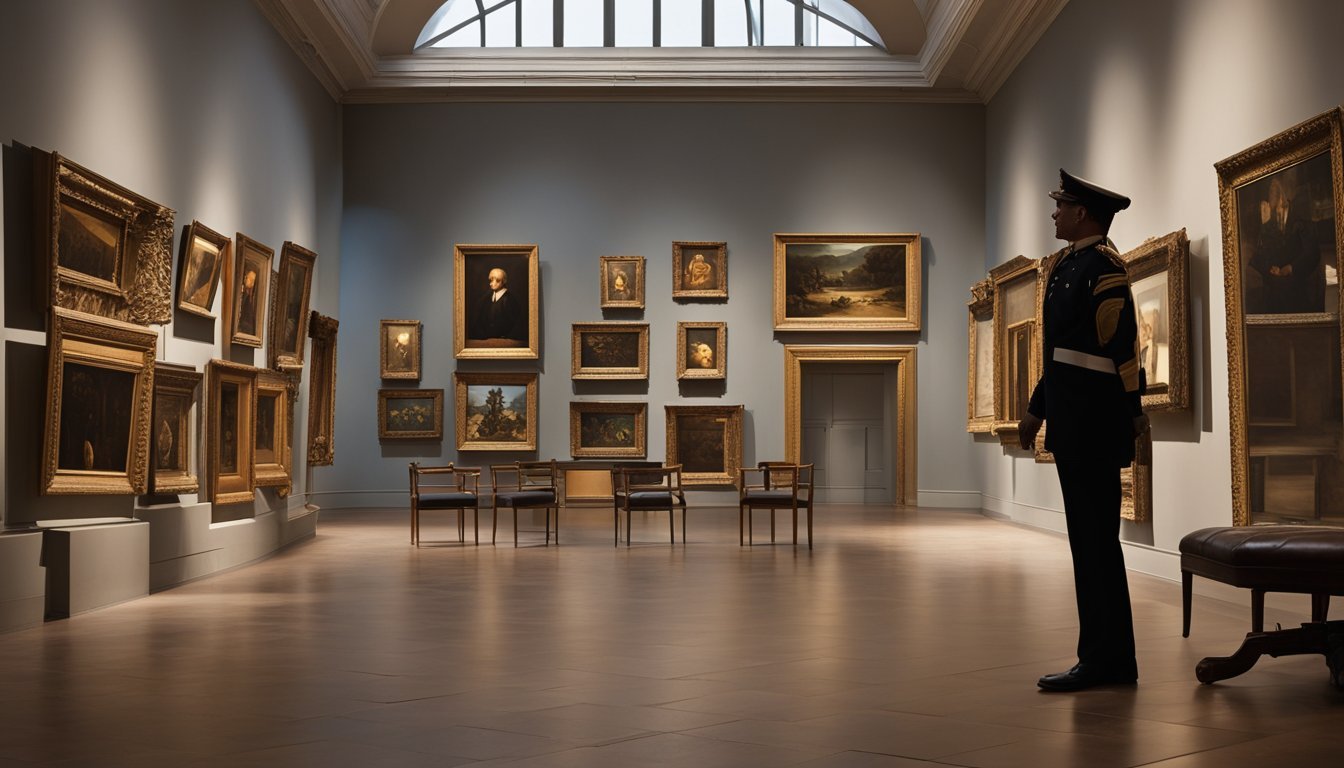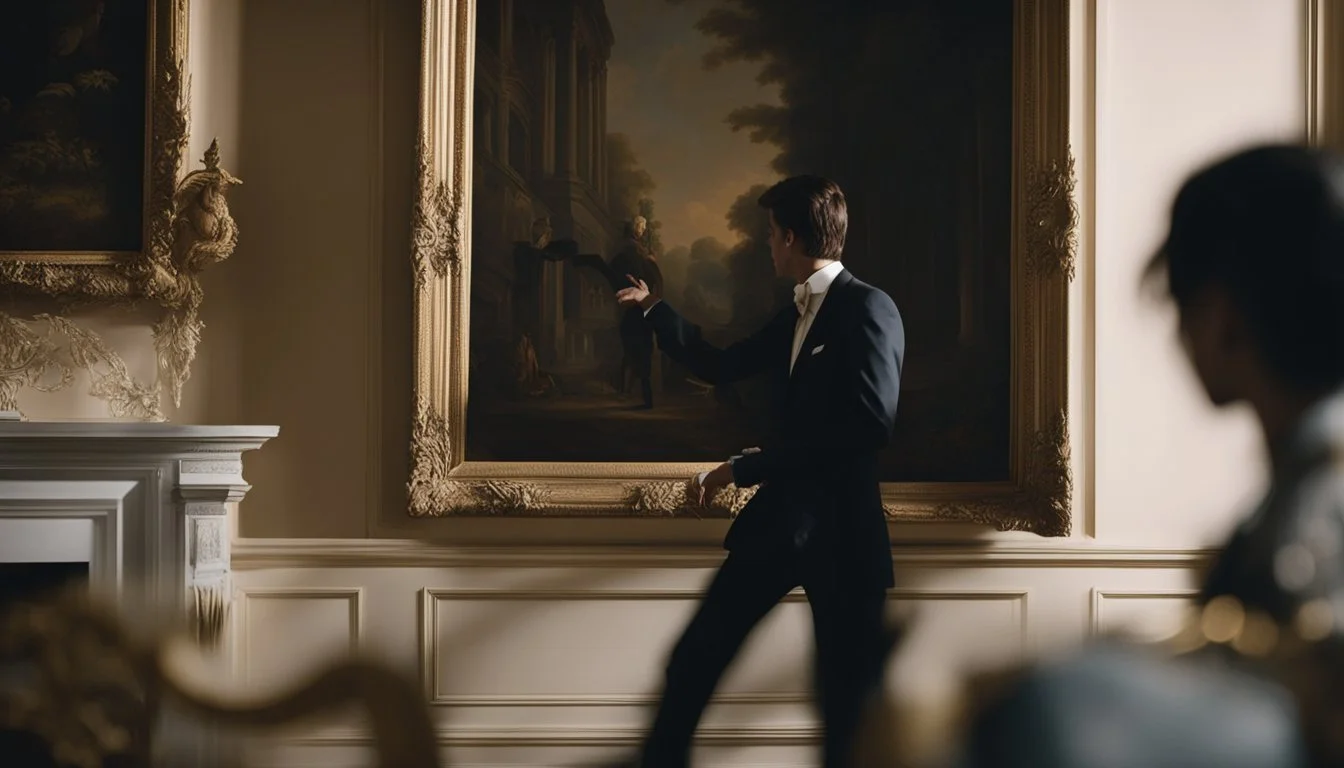6 True Crime Documentaries About Art Theft in the Wealthy Elite
Shocking Heists and High-Profile Investigations
Art heists have long captivated both the public and art aficionados, weaving stories of intrigue, high-stakes drama, and the blending of culture and crime. These audacious crimes often involve the wealthy elite and are executed with meticulous planning, leading to losses worth millions.
Understanding these true crime documentaries offers a window into the hidden world of art theft and the lengths to which some will go to possess timeless masterpieces. They also highlight the relentless efforts of law enforcement and museum officials to recover these priceless works.
1) The Medici Heist
The Medici Heist is a tale of intrigue and high society. It took place in Florence, Italy, during the early 16th century. The Medici family, renowned for their patronage of the arts, was the target. This heist involved the theft of numerous valuable art pieces from the Medici Palace.
What makes this heist particularly striking is the nature of the Medici family itself. As one of the wealthiest and most influential families in Renaissance Italy, they possessed an enviable collection of artwork. Their connection to artists like Michelangelo and Leonardo da Vinci made their palace a treasure trove.
Investigations at the time revealed that insiders might have been involved. The sophisticated nature of the theft—executed with detailed knowledge of the palace layout and security—suggested help from within. This has added layers of mystery and speculation over the centuries.
The stolen artworks, many of which were never recovered, included masterpieces by some of the era's most famous artists. This loss not only impacted the Medici collection but also deprived the art world of significant cultural artifacts.
For more information on this historical art heist, you can check out the Medici Heist entry on Wikipedia.
2) The Great Art Caper of 1990
The Great Art Caper of 1990 stands as one of the most infamous art heists in modern history. This event took place at the Isabella Stewart Gardner Museum in Boston on March 18, 1990.
On that fateful night, two men disguised as police officers gained entry into the museum. They subdued the security guards on duty and systematically looted the museum.
They spent 81 minutes inside, taking 13 pieces of art, including works by Vermeer, Rembrandt, and Degas. The total value of the stolen art was estimated at around $500 million, making it the largest property theft in history.
The boldness and precision of the heist have led to countless theories and speculation about the perpetrators. Despite numerous investigations and a substantial reward offered, none of the stolen artworks have been recovered to date.
The case remains unsolved, attracting interest from true crime enthusiasts and art historians alike. It has been the subject of various documentaries, including the 2021 Netflix series "This Is a Robbery: The World's Biggest Art Heist." IMDb
3) Vanishing of the Gardner Museum Treasures
In March 1990, Boston’s Isabella Stewart Gardner Museum experienced an unprecedented art heist. Two men disguised as police officers entered the museum, tied up the security guards, and stole 13 pieces of art valued at roughly $500 million.
Decades later, this theft remains unsolved. The stolen pieces include works by Vermeer and Rembrandt, which continue to attract global attention and speculation.
The case is explored in several documentaries, one of the most notable being This Is a Robbery: The World's Biggest Art Heist (2021), which is a four-part series on Netflix. This series examines the intricate details and lingering questions surrounding the heist.
Another engaging documentary that delves into this mystery is the episode from the Inside the FBI Podcast, which offers insights into the ongoing investigation and the challenges faced by law enforcement.
These documentaries highlight the complexities and enduring fascination of the Gardner Museum art theft, capturing both the mystery and the ongoing quest for answers.
For further exploration, visit This Is a Robbery on IMDb.
Read more about the museum and the heist on Wikipedia.
4) The Rape of Europa (2007)
"The Rape of Europa" provides a meticulous examination of the systematic theft, deliberate destruction, and miraculous survival of Europe's art treasures during the Third Reich and World War II.
The documentary explores how the Nazis, driven by fanaticism and greed, looted art from the nations they overran. It highlights the efforts of American troops and other allied forces to recover these stolen works.
Viewers are taken on a journey through seven countries, revealing the extent of the devastation and the challenges faced in preserving Europe's artistic heritage. The film features various recovered artworks and the stories of their rescue.
Through interviews and historical footage, "The Rape of Europa" presents a vivid narrative of resistance and resilience in the art world during one of history's darkest periods. This documentary is a critical resource for those looking to understand the impact of war on cultural heritage.
For more information, visit IMDB.
5) Secret Lives of the Rembrandts
"Secret Lives of the Rembrandts" is a gripping exploration of the mysterious world of art theft, focusing on prized paintings by Rembrandt.
Released in 2019, this documentary dives into the complex and often shadowy networks that target valuable artwork. It examines both the historical context of Rembrandt's works and the modern criminal enterprises that seek to exploit them.
Featuring interviews with art historians and crime experts, the film sheds light on how Rembrandt's masterpieces have been stolen, recovered, and in some cases, lost forever.
The documentary also highlights the intricate methods used by thieves to acquire these valuable pieces and the advanced technology employed to safeguard them.
Engaging and informative, "Secret Lives of the Rembrandts" offers viewers a rare glimpse into the intersection of high art and high crime.
For more information, visit the IMDB page.
6) The Fiendish Affair at the Louvre
In 1911, the art world was shaken by the daring theft of the Mona Lisa from the Louvre in Paris. The painting, one of the most recognizable works by Leonardo da Vinci, disappeared without a trace, leaving both the public and authorities baffled.
The man behind this audacious crime was an Italian handyman named Vincenzo Peruggia. He believed the painting belonged in Italy and should not reside in France. Peruggia hid inside the museum overnight and took the painting the next morning.
For two years, the world wondered about the fate of the Mona Lisa. Many feared it was lost forever. Peruggia eventually attempted to sell the painting to an art dealer in Florence, which led to his capture and the painting's safe return to the Louvre.
The theft transformed the Mona Lisa from a piece of art to a global icon. The incident heightened its fame, drawing unprecedented attention from the media and the public. Today, it remains one of the most visited artworks in the world.
To learn more about the Mona Lisa's theft and its impact, check out the documentary details on IMDB (2024).
Historical Overview of Art Theft Among Wealthy Elite
Art theft has been a persistent crime, often entwining the opulent lifestyles of the wealthy elite. This section explores some of history's most notorious art theft cases and delves into the patterns and motivations driving these crimes.
Notable Cases of Historical Art Theft
Isabella Stewart Gardner Museum Heist (1990): This infamous heist involved the theft of 13 artworks worth over $500 million. Two men disguised as police officers tricked security and stole pieces by Vermeer, Rembrandt, and Degas.
Russborough House Heists (Ireland): Russborough House has been targeted multiple times, with significant robberies in 1974, 1986, 2001, and 2002. Most notably, 19 artworks by Rubens, Goya, and Vermeer were stolen, often with connections to art theft syndicates.
Theft of de Kooning's "Woman-Ochre" (1985): Willem de Kooning’s painting was stolen by a couple from the University of Arizona’s Museum of Art. It remained missing for over 30 years, resurfacing in a New Mexico estate sale.
Patterns and Motivations Behind Art Theft
Art theft among the elite often showcases intricate planning and an understanding of the art market's weaknesses. Thieves exploit periods of low security, such as during public events or festivities.
Motivations:
Financial Gain: The high value of stolen art can fetch significant sums in illicit markets, even if considerably lower than its market value.
Prestige: Possession of stolen artworks can confer an underground status among criminal elites, symbolizing power and influence.
Political Statements: Some thefts occur to make ideological statements, targeting symbols of wealth and cultural heritage to disrupt societal norms.
These patterns reveal a criminal sophistication and the complexities behind art thefts, often illustrating a crossover between financial drive and social commentary.
Impact of Art Theft on Society
Art theft significantly affects both cultural heritage and the economy, posing legal challenges in the recovery process.
Cultural and Economic Consequences
Art theft robs society of its cultural treasures, disrupting the connection between people and their heritage. Masterpieces that once inspired and educated are lost, leaving cultural voids. Museums and galleries face substantial financial losses, not only from the missing pieces but also from decreased visitor numbers.
Stolen art pieces are often sold in the black market at a fraction of their value. This illegal trade fuels organized crime, creating a shadow economy that undermines legitimate markets. Moreover, the loss of historically significant art can diminish a nation's identity and prestige, impacting tourism and international reputation.
Legal Challenges in Recovering Stolen Art
Recovering stolen art presents complex legal hurdles. International laws vary, complicating cross-border investigations. Art thieves often exploit these discrepancies, hiding stolen pieces in countries with lenient regulations. Provenance documentation becomes crucial but is frequently falsified or incomplete.
Victims and authorities must navigate a labyrinth of jurisdictions, requiring cooperation between international agencies such as Interpol and UNESCO. Legal battles can be prolonged, with some cases taking decades to resolve. The lack of unified legal frameworks and the high value of stolen art make recovery efforts arduous and often unsuccessful.




